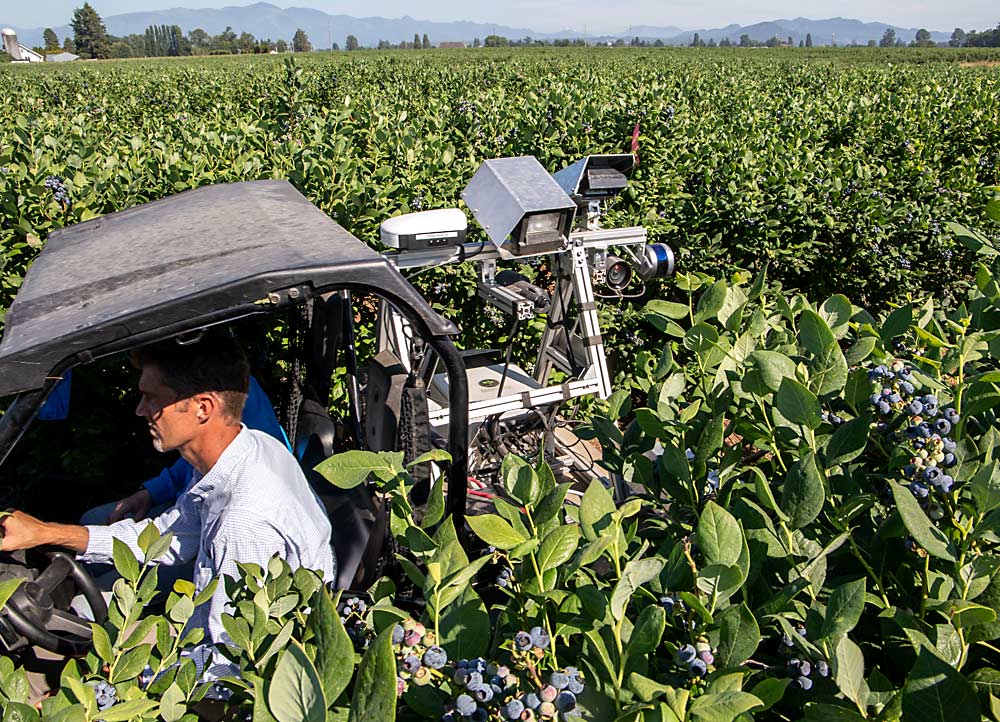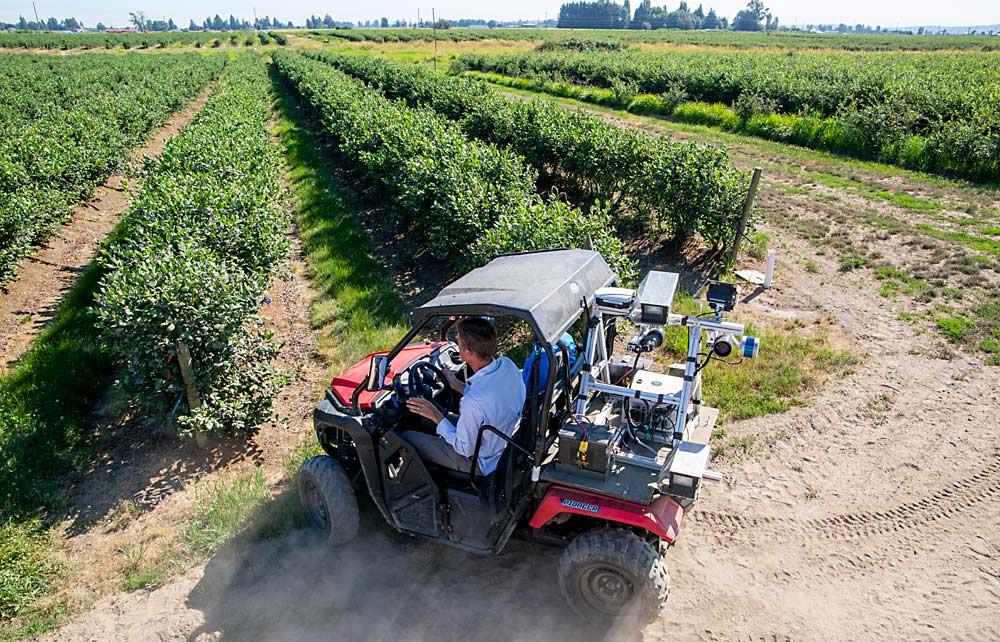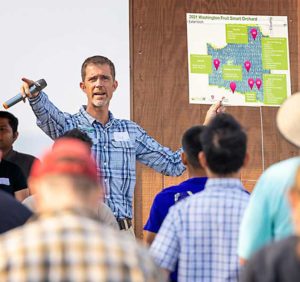
An agricultural technology company, two Washington growers and a national trade association are trying to do for blueberries what the Smart Orchard Project is doing for tree fruit.
They call it BerrySmart, of course (BerrySmart Field Project, technically).
Funded by a grant from the U.S. Highbush Blueberry Council, BerrySmart attempts to create a sandbox for tech companies offering imagery, soil and plant sensors, connectivity, irrigation management, fertility and more.
“The goal of the project is to validate a smart farm network that enables blueberry growers/packers/sales, tech community and researchers to collaborate on farm operation optimization with better and more predictable yield outcomes,” said Amanda Griffin, USHBC vice president of engagement and education, in an emailed statement.
Last year, the USHBC invited Steve Mantle, owner of ag data science startup innov8.ag, to industry conferences to discuss his work with the tree fruit industry’s Smart Orchard Project, in which dozens of sensors keep watch on everything from irrigation to crop load at two orchards in Grandview and Pasco. The company facilitates the project in collaboration with the Washington Tree Fruit Research Commission, Washington State University and growers. Staff from the research commission and WSU also presented at the conference.
In February this year, the blueberry group awarded Mantle a one-year grant for $50,000 to begin setting up something similar for two blueberry farms, one on each side of the state.
With help from the Washington Blueberry Commission, Mantle located the collaborating farms and started with the services his Walla Walla company provides: scanning soil, blooms, canopy and crop load at both farms. Blueberry marketing companies, including giants Driscoll’s and Naturipe Farms, have expressed interest in crop load predictions, Mantle said.
Two farms
For the field sites, they chose Washington for the diversity of growing conditions, settling on Sakuma Bros. Farms in the temperate area of north Puget Sound and Blue Mountain Farms near Pasco in arid South Central Washington. Sakuma Bros., a producer with more than 500 blueberry acres, grows mostly conventional berries on berms, both hand-picked and machine-harvested for fresh and processing markets. Blue Mountain has 150 acres, all hand-picked and organically managed in flat ground, destined for Naturipe’s fresh sales. Both have their own packing facilities.
At both farms this year, Mantle started in the spring with bloom imagery using scanners mounted to one of his ATVs, which he and his crews haul around the state in white trailers. As the season progressed, he followed maturing blueberries and conducted soil scans.

In a Burlington office in July, Mantle showed Sakuma leaders soil maps. Blueberry crop manager Spencer Fiser reacted as if to a revelation. A couple of the images, which showed pH and water content, made him want to go check a field almost immediately.
“I feel like I could just digest this for days,” Fiser said.
As for crop estimation, Fiser physically counted berries on 15 bushes to give Mantle’s scanners a point of reference. Each bush averaged about 1,400 berries, or 1.88 million berries per acre. Convert that to weight, combine with year-to-year tonnage and calibrate by variety, and eventually the data should paint an accurate picture of how much each block of berries will produce, helping the company prepare for seasonal sales and labor needs, Fiser said.
On the dry side of the state, a younger blueberry region, Blue Mountain has used soil moisture probes to guide irrigation for a few years but still estimates crop load by counting berries on five or 10 bushes per block and making rough averages. The idea of technology doing that more quickly and accurately sounds great, said farm owner Shirley Mason.
Meanwhile, her farm looks flat to the naked eye but is pocked with small undulations that cause puddles and dry spots. Soil probes help, but she doesn’t have them everywhere. Mantle’s scans show those differences accurately and clearly, guiding her variable treatments, she said.
“I’m always interested if technology is going to be more helpful,” Mason said.
Mantle and Griffin expect the project to continue for many years and expand into sustainability efforts and educational outreach, as other tech players join. WSU and Oregon State University researchers have participated in data analysis and horticultural discussion. WSU’s AgWeatherNet has committed to installing Tier 3 weather stations, said Lav Khot, interim director. Australian soil-moisture monitoring company Sentek is interested in contributing equipment to BerrySmart next year, said Gill Costa, the company’s business development manager for the Western U.S.
There are challenges, of course, Mantle said. The artificial intelligence underlying the equipment he uses needs to be “taught” how to recognize blooms and berries more efficiently, he said. Also, his ATVs sometimes struggle to access rows, either because of mud or berry-laden branches hanging in the way. The apple industry has a 20-year or so head start modifying orchard architecture into two-dimensions, paving the way for coming technology.
“How does technology better adapt and how do growers better adapt?” Mantle said.
Everyone in the industry wants to explore ways to improve efficiency, said Bryan Sakuma, sales and marketing manager of Sakuma Bros. and a USHBC board member. Experimenting alongside Mantle and industry leaders is the only way to make that happen.
“If you are not part of the solution, then you don’t get a solution,” Sakuma said.
—by Ross Courtney







Leave A Comment